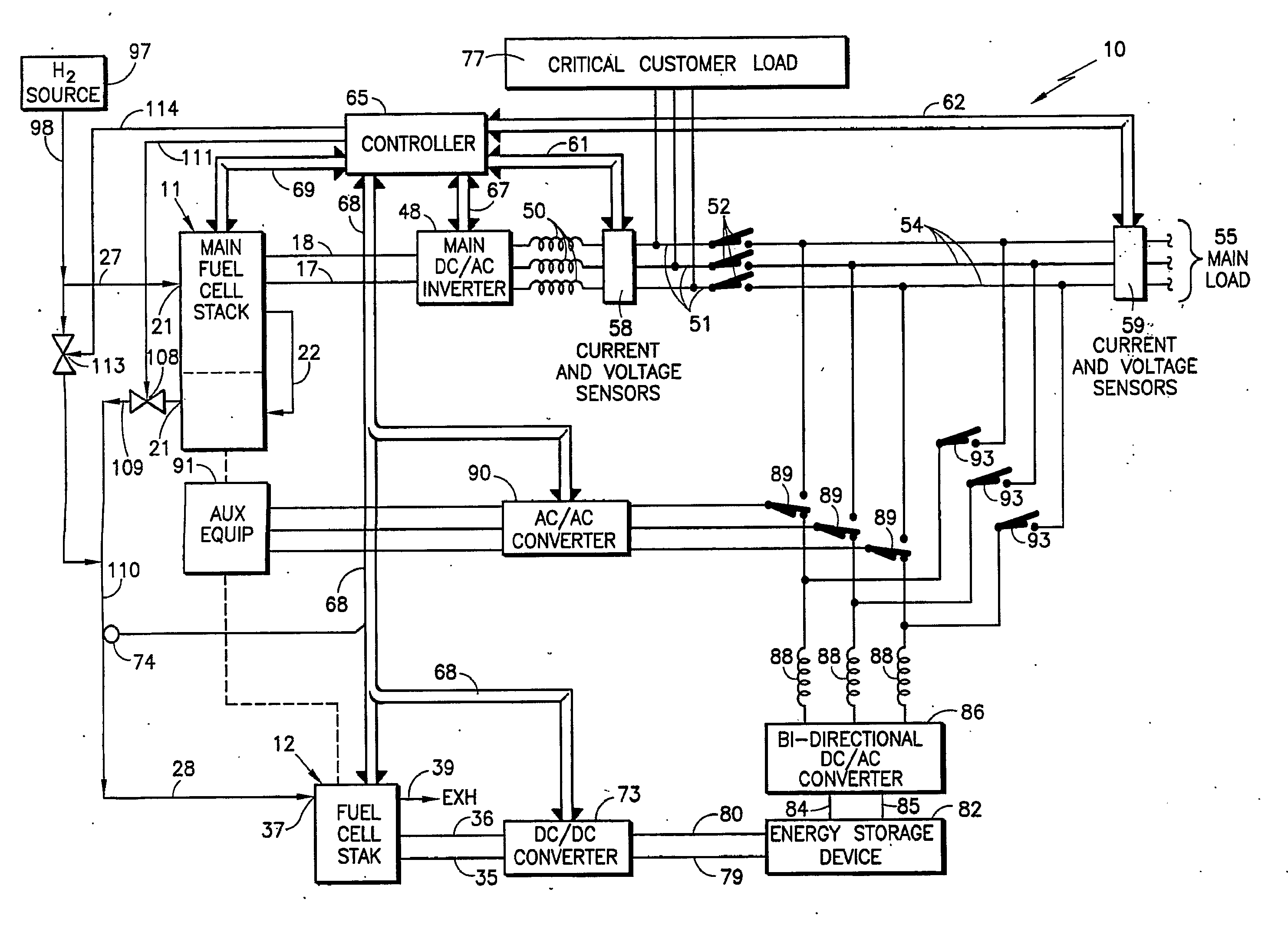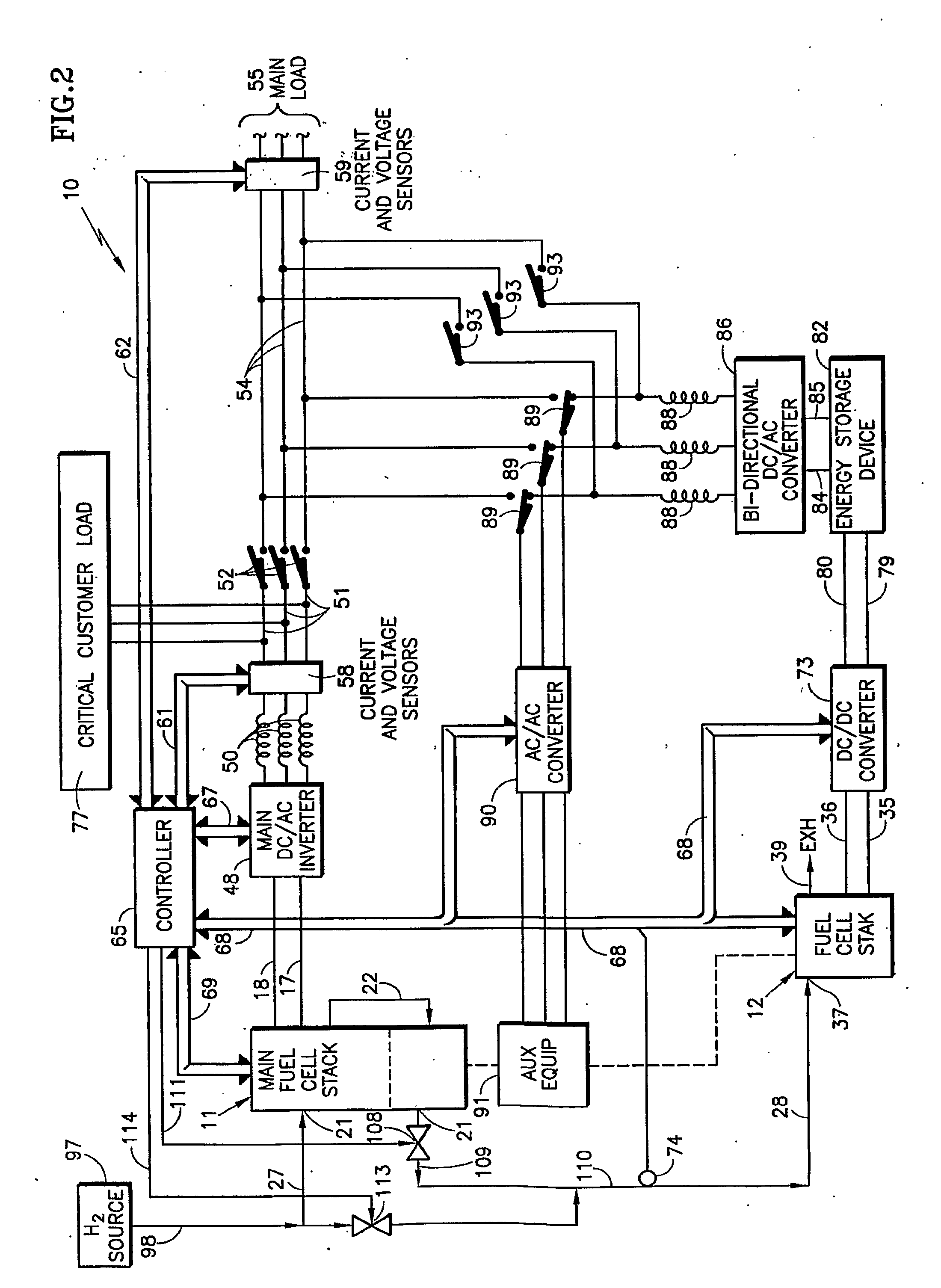Fuel-cascaded fuel cell stacks with decoupled power outputs
a fuel cell and cascade technology, applied in the direction of fuel cells, electrochemical generators, electrical equipment, etc., can solve the problems of irreversible cell corrosion, concomitant performance reduction, fuel starvation, etc., and achieve 100% fuel utilization, high fuel utilization, and minimal consequences of resulting fuel starvation
- Summary
- Abstract
- Description
- Claims
- Application Information
AI Technical Summary
Benefits of technology
Problems solved by technology
Method used
Image
Examples
Embodiment Construction
[0016]In FIG. 1, a fuel cell power plant 10 includes a primary stack 11 of fuel cells 11a and a secondary stack 12 of fuel cells 12a. The stack 11 has power take-off elements 17, 18 which may be integrated with end plates (not shown). The primary stack has a fuel inlet / outlet manifold 21, a fuel turn manifold 22, an air inlet manifold 23, and an air exit manifold 24. Fuel enters through a fuel inlet conduit 27 and exits through a fuel transfer conduit 28. Air enters through an air inlet conduit 30 and exits through an air exit conduit 31.
[0017]As an example only, the fuel reactant gas flow field plates of each of the fuel cells 11a in the stack 11 as well as the fuel inlet / outlet manifold 21 are set up so that 76% of each fuel cell receives fuel in a first pass indicated by an arrow 33, and 24% of each fuel cell receives fuel in a second pass indicated by an arrow 34. In this example, the main stack 11 may comprise, for instance, 32 fuel cells. The output voltage in such a case woul...
PUM
| Property | Measurement | Unit |
|---|---|---|
| output voltage | aaaaa | aaaaa |
| voltage | aaaaa | aaaaa |
| series voltage relationship | aaaaa | aaaaa |
Abstract
Description
Claims
Application Information
 Login to View More
Login to View More - R&D
- Intellectual Property
- Life Sciences
- Materials
- Tech Scout
- Unparalleled Data Quality
- Higher Quality Content
- 60% Fewer Hallucinations
Browse by: Latest US Patents, China's latest patents, Technical Efficacy Thesaurus, Application Domain, Technology Topic, Popular Technical Reports.
© 2025 PatSnap. All rights reserved.Legal|Privacy policy|Modern Slavery Act Transparency Statement|Sitemap|About US| Contact US: help@patsnap.com



